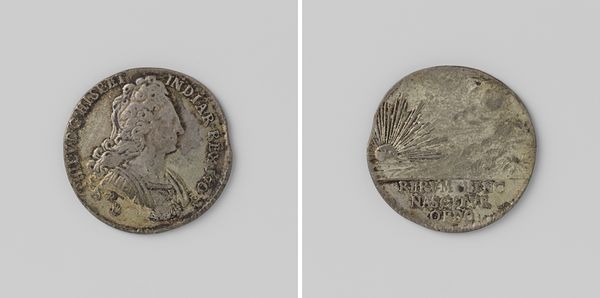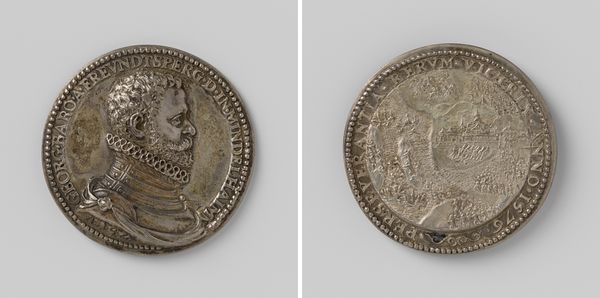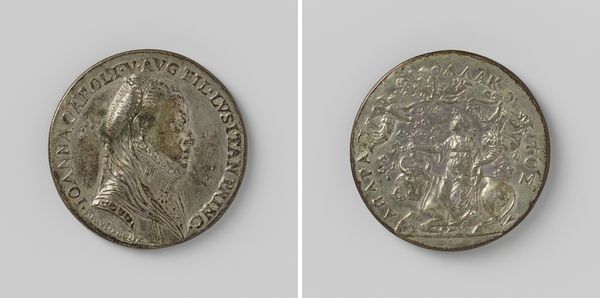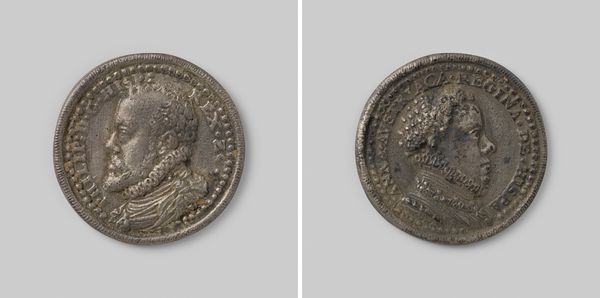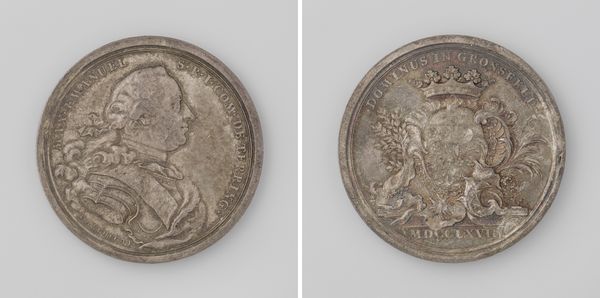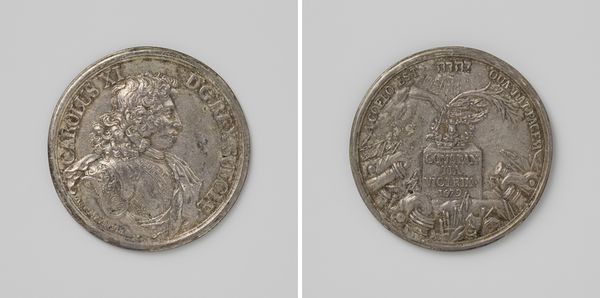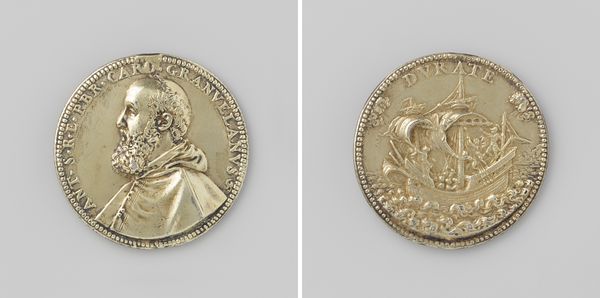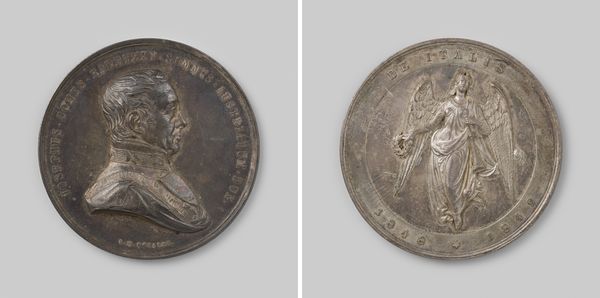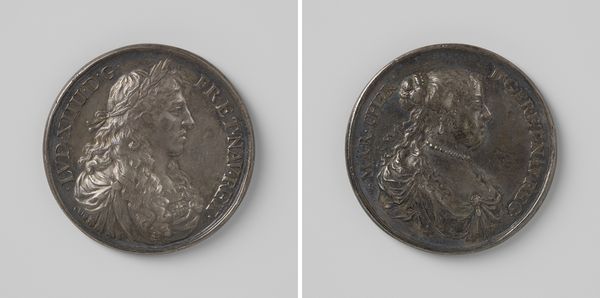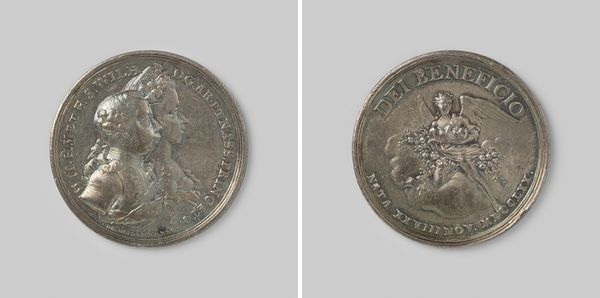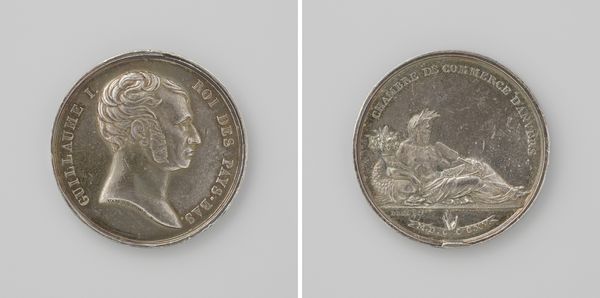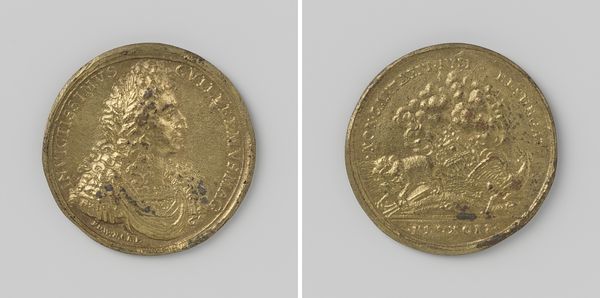
metal, relief, sculpture
#
portrait
#
metal
#
sculpture
#
relief
#
11_renaissance
#
sculpture
#
ceramic
#
history-painting
Dimensions: diameter 3.7 cm, weight 26.43 gr
Copyright: Rijks Museum: Open Domain
Curator: Look at the patina! It lends such an ethereal quality to this double-sided metal relief currently housed at the Rijksmuseum. The piece dates back to 1582 and portrays "Francois, hertog van Anjou en Alençon." What are your initial thoughts? Editor: It's... muted. There's an almost haunting pallor to the metal that impacts the figures depicted. Even though it is sculpture, it feels two-dimensional. What historical narratives are enmeshed within this medallion? Curator: As a tangible object circulated amongst elites, it represented and performed Anjou's political aspirations. Note how the relief presents a stoic, almost detached profile, fitting the codes of masculinity during this era. One side shows his visage, and the other features a landscape dominated by a radiant sun rising over water. Editor: Yes, I observe a sunrise or perhaps a beacon, situated just above what looks like turbulent waves, contained within the disc's circumference. Semiotically, that contrast jumps out: the turmoil of water versus the beaming light. This could symbolize the volatile political climate in which Anjou was attempting to shine. Curator: Precisely! And that volatile climate was very fraught. As Duke of Anjou, he sought sovereignty over the Netherlands during a time of intense religious and political conflict. Consider, too, how these portrait medals functioned to propagate power and shape public perception. What does this small object communicate about cultural norms and sociopolitical anxieties during the late Renaissance? How do you see its symbolism resonating across identities? Editor: Beyond Anjou’s historical and personal context, light’s persistent motif creates a sense of dramatic tension. Consider how the circular format interacts with both subjects represented in relief—one the Duke’s profile and the other the powerful symbolism. The artist masterfully works in such confined space, framing those tiny allegories within broader political dimensions. Curator: This medal offers a glimpse into Anjou’s attempts to construct a regal, near mythical persona amidst great turmoil, reminding us that even small artifacts bear complex meanings about larger narratives. Editor: Yes, indeed, there are broader significations; while simultaneously demonstrating remarkable artistry within a limited scale and space, it still speaks to themes both political and personal.
Comments
No comments
Be the first to comment and join the conversation on the ultimate creative platform.
